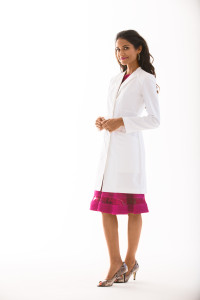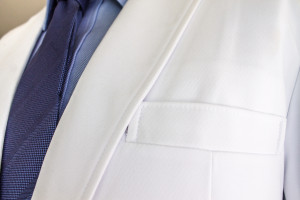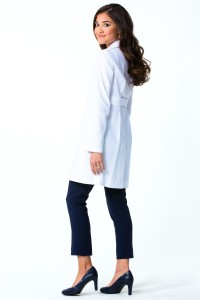A lab coat to a physician is what a suit is to a business person. That’s why you really shouldn’t cut corners when it comes to picking out a lab coat – if you picked out a cheap, shoddy lab coat what does that say about you? Believe me, your patients and colleagues will notice if you have been thrifty (or stingy, depending on how you look at it) with your uniform shopping, and one of the biggest reasons for that is that cheap lab coats are made with cheap fabric.
On the other hand, a nicer quality lab coat will really show. Quality is apparent in the cut, style and details of your coat, and a professional appearance for a doctor also depends on that coat being impeccably bright white.
So the biggest factor of choosing a lab coat…is the ability of that lab coat to release stains.
You don’t need me to tell you that during your shifts there is a large chance you’ll get some sort of bodily fluid on your clothes, or spill your coffee, or have a pen explode in your pocket. Once a coat is stained, you really can’t wear it again, so to make your lab coat last you as long as possible, you should find a high quality white lab coat made with a performance fabric.
Most performance fabrics are made with the wearer in mind. In the case of performance lab coats, this means that the lab coat should easily release stains in the wash. That way you can wear your coat again and again without having to throw it out once it gets a stain!














